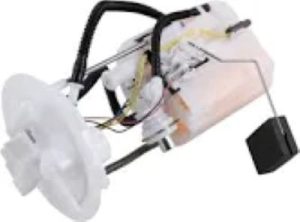There are some signs you can pay attention for that will indicate you that the fuel pump efficiency is reduced, or that the pump is completely dead. One of the main symptoms, of problem, is also starting issues since a failing fop will not be able to maintain the pressure that is needed to send fuel to the engine. Fuel pumps create the pressure anywhere from 40-60 PSI in most typical vehicles and when that pressure drops even 10%, the engine may take longer to start and even not start at all. Another symptom of bad fuel flow is repeated stalling when in acceleration or at idle due to combustion being interrupted.
Significantly Poor Fuel EconomyOften the sign of a failing fuel pump. If the pump is damaged, it will not deliver a steady flow, which will result in an overly rich or lean air-fuel mixture and decreased miles per gallon (MPG). Research suggests that a pump not performing properly may increase fuel consumption as much as 20 percent, costing drivers at the pump. If the pump motor overheats regularly due to internal wear or cooling being inadequate it can cause Sudden Stops and/or erratic operation, especially noticeable in high-speed driving.
A whining sound from the fuel tank is also a sign of fuel pump problems. Usually fuel pumps hum at a low frequency but if the pump has to work hard to get the fuel off, you may hear it start to whine at a higher frequency. Mechanics indicate that such a noise can be a sign of blocked or internal wearing, both of which can cause total pump failure. Clogged filters or sediment eventually require the pump to run harder and harder, so it overheats and fails. Changing the filter every 20,000 to 30,000 miles on a regular basis should avoid this problem.

Another indication is an abrupt drop of power while accelerating or while climbing hills, as the fuel pump cannot supply the gas engine demands more fuel is needed. This is especially true for high-performance engines that will require a constant supply of fuel under high RPM, but a failing pump can also result in hesitation or sluggish engine behavior. As fuel starvation can lead to misfires, in extreme cases the absence of sufficient fuel can create engine damage if left unattended.
In most cases, pump failure leads to low fuel pressure, which can be tested with a pressure gauge. Remove the fuel pump fuse and install the fuel pressure gauge and start the engine–if the gauge is lower than the recommended pressure range by the manufacturer, typically around 40–60 PSI for just about every car, the fuel pump is probably not performing up to spec. This is commonly used by mechanics as a diagnostic tool to confirm the pump failure and to ensure that the problem is limited to the pump and not any other fuel system component.
By having these symptoms checked out right away, it ensures you can identify a failing Fuel Pump before it results in more serious engine problems. Being aware of these indicators when they start appearing can save money on repairs and ensure reliability on the road.